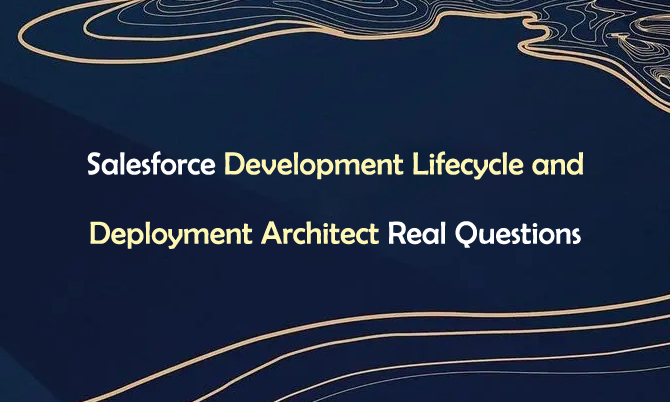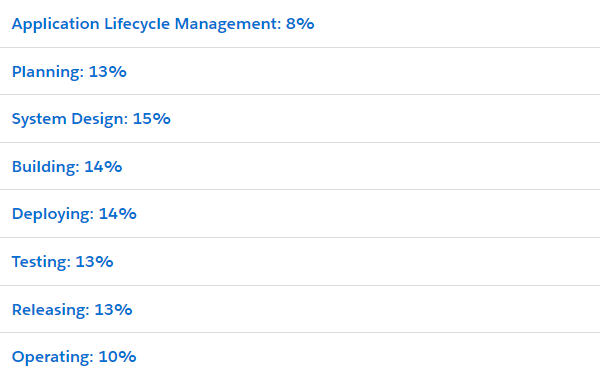Salesforce Certified Development Lifecycle and Deployment Architect exam topics cover the following details.
Salesforce Development Lifecycle and Deployment Architect real exam questions are the best material for you to study the above topics. Share some Salesforce Development Lifecycle and Deployment Architect real exam questions and answers below.
1. Universal Containers has written several validation rules and workflow rules for the lead object. Which two test types should an Architect suggest to ensure that a large inbound call center does not experience platform slowdowns under high call volume for the Lead object? Choose 2 answers
A. Performance Test
B. Unit Test
C. Stress Test
D. Load Test
Answer: A,D
2. Cloud Kicks is switching to Salesforce from a different CRM. They have existing datasets for all standard Salesforce objects. In which optimized order should the architect recommend these objects be loaded?
A. Accounts, Contacts, Leads, Products, Opportunities, Opportunity Line Items
B. Accounts, Contacts. Opportunities, Products, Opportunity Line Items, Leads
C. Leads, Accounts, Contacts, Products, Opportunities, Opportunity Line Items
D. Leads, Contacts, Accounts, Opportunities, Products, Opportunity Line Items
Answer: C
3. Universal Containers (UC) is implementing a governance framework and has asked the Architect to make recommendations regarding release planning. Which two decisions should the Architect make when planning for releases? Choose 2 answers
A. How to test existing functionality to ensure no regressions are introduced.
B. When to test a new UC feature release if there are issues.
C. How to roll back to the previous Salesforce release if there are issues.
D. Whether Salesforce will wait to upgrade the pod until after a UC release is complete.
Answer: B,C
4. As a part of technical debt cleanup project, a large list of metadata components has been identified by the business analysts at Universal Containers for removal from the Salesforce org. How should an Architect manage these deletions across sandbox environments and production with minimal impact on other work streams?
A. Generate a destructivechanges.xml file and deploy the package via the Force.com Migration Tool
B. Delete the components in production and then refresh all sandboxes to receive the changes
C. Assign business analysts to perform the deletes and split up the work between them
D. Perform deletes manually in a sandbox and then deploy a Change Set to production
Answer: A
5. Universal Containers is adopting Scrum as an agile methodology and wants to choose a software tool to support the adoption. What three key features of an agile development support tool should an architect look for? Choose 3 answers
A. Product backlog prioritization
B. Sprint backlog management
C. Kanban board
D. Email notifications when work is created or changed
E. Work (for example, user stories or tasks) assignment
Answer: A,C,E


